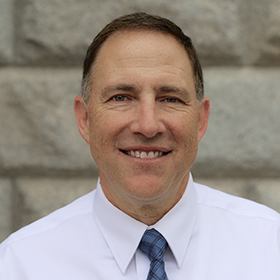News and Announcements
Comprehensive Beehive Emissions Reduction Plan
Air Quality Rule and Plan Changes Open for Public Comment
The rule and public hearing information for amendments to Rule R307-101 is available for review on the open for public comment webpage.
Ultra-Low NOx Water Heaters Background and Guidance
During the 2025 General Session, the Utah State Legislature passed H.B. 313, Construction Industry Amendments, which amended Utah State Code 19-2-107.7 to limit the applicability of the nitrogen oxide emission limits for natural gas-fired water heaters set in 15A-6-102 from applying statewide to only applying in ozone and PM2.5 nonattainment areas in the state.
This law went into effect on July 1, 2025. To help Utah residents and businesses know whether they are affected by this change, the Utah Division of Air Quality has developed additional background information and guidance.
2025 Annual Monitoring Network Plan (Commenting Period Closed)
The 2025 Monitoring Network Plan official comment period has ended.
However, the division always welcomes your feedback or comments. Reach out to [email protected] or by mail to:
Air Quality Monitoring
P.O. Box 144820
Salt Lake City, Utah
84114-4820
Upcoming Air Quality Funding
Utah was awarded several large new grants in 2024: the Climate Pollution Reduction Grant (CPRG) Implementation Grant (approximately $75 million), the Clean Ports Program Grant ($110 million), and the Clean Heavy Duty Vehicles Grant ($60 million).
2024 DAQ Annual Report
The Annual Report is intended to provide an overview of Utah’s air quality, as well as the Division of Air Quality’s organization, activities, and progress throughout 2024.
House Bill 220 – Halogen Emissions Final Report
H.B. 220 was passed during the 2023 Utah Legislature General Session requiring the Utah Division of Air Quality to develop and publish a halogen air emission inventory, recommendations for best available control technologies, and recommendations for a state standard limiting halogen emissions for counties along the Wasatch Front by November 20, 2024. More information about H.B. 220, the final report, and the halogen emissions inventories can all be found by visiting Utah Halogen Emissions.
2024 Utah Air Monitoring Network Plan Available for Comment
The Annual Air Monitoring Network Plan is available for review and comment.
The Utah Air Monitoring Center provides an annual review of information about the Utah air monitoring network and pollution trend.
Submit comments to Bo Call ([email protected])
House Bill 220 (General Session 2023)
House Bill 220 (General Session 2023) requires UDAQ to:
- complete an emissions inventory of point sources that emit halogens by December 31, 2024,
- complete an emissions reduction plan to reduce halogens by December 31, 2026, and
- provide recommendations for a state standard limiting halogen emissions
Learn more about the interim status report on UDAQ’s H.B. 220 inventory and literature
S.B. 136
Senate Bill 136 (General Session 2022) required UDAQ to conduct studies and provide recommendations to inform the development of a Utah-specific diesel emissions reduction framework.
Utah Receives $1,284,587 for three community air pollution monitoring projects
The EPA has selected three Utah groups, including the Department of Environmental Quality, to receive funding to conduct air quality monitoring in communities across Davis and Salt Lake Counties. The projects are focused on communities that are underserved, historically marginalized, and overburdened by pollution.
Am I in a Non-Attainment Area?
(06/26/2018)—An address and coordinate search tool that shows air quality non-attainment and maintenance areas in Utah.

P.O. Box 144820
Salt Lake City, Utah
84114-4820
Phone: (801) 536-4000
FAX: (801) 536-4099
Environmental
Incidents
Location
Multi Agency
State Office Building
195 North 1950 West
Salt Lake City, Utah
84116
Hours
Monday-Friday
8:00 a.m. to 5:00 p.m.
